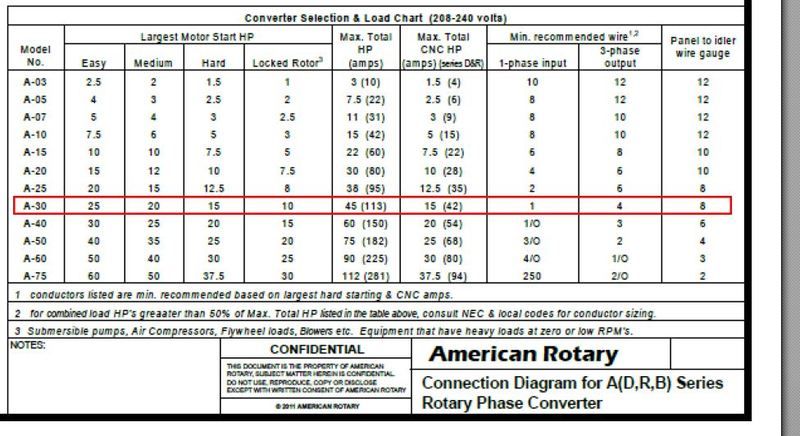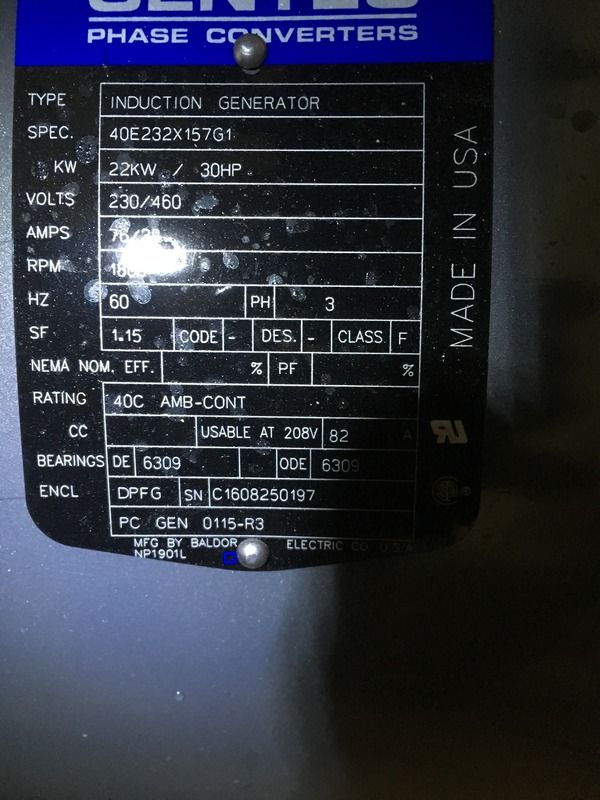romex jockey
Senior Member
- Location
- Vermont
- Occupation
- electrician
Gentlemen, w have a rotary phase converter, spec's highlighted in red>>>

The customer has no idea what loads it will serve , other than it will be doing many portable pieces of 3 ph equipment in the near future, all of which will assume some sort of pin/sleeve and/or twist lock 3ph receptacle outlets on a b-board close by
Reading 455, it would seem there is much predicated on 'loads served' , yet little for an install not
>>>>
and further goes on to disconnects >>>
My Q is, what HP and amperage would a disco before the converter need be? I'm thinking 240V fusible w/ aux contacts
Any help appreciated
~RJ~

The customer has no idea what loads it will serve , other than it will be doing many portable pieces of 3 ph equipment in the near future, all of which will assume some sort of pin/sleeve and/or twist lock 3ph receptacle outlets on a b-board close by
Reading 455, it would seem there is much predicated on 'loads served' , yet little for an install not
>>>>
455.7(A) Variable Loads. Where the loads to be supplied are
variable, overcurrent protection shall be set at not more
than 125 percent of the phase converter nameplate single-
phase input full-load amperes.
and further goes on to disconnects >>>
455.8 Disconnecting Means.
My Q is, what HP and amperage would a disco before the converter need be? I'm thinking 240V fusible w/ aux contacts
Any help appreciated
~RJ~


